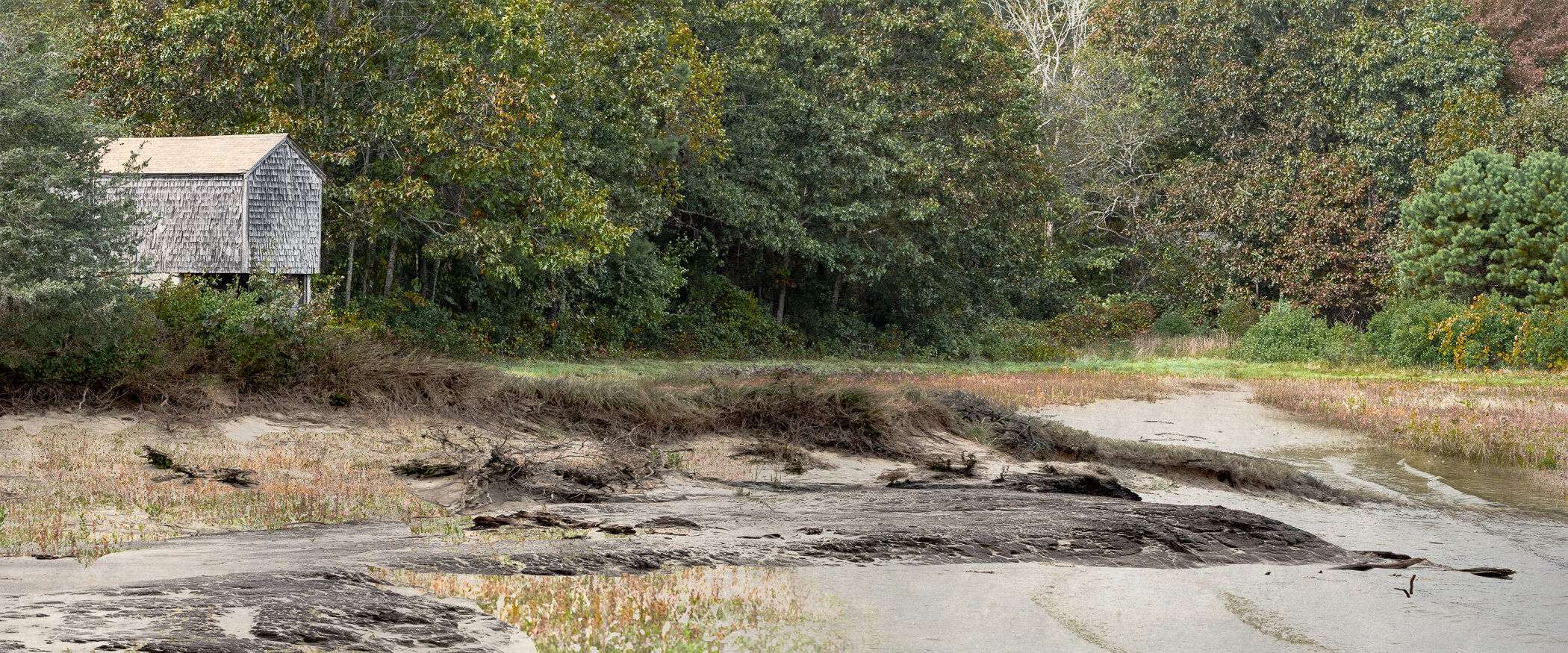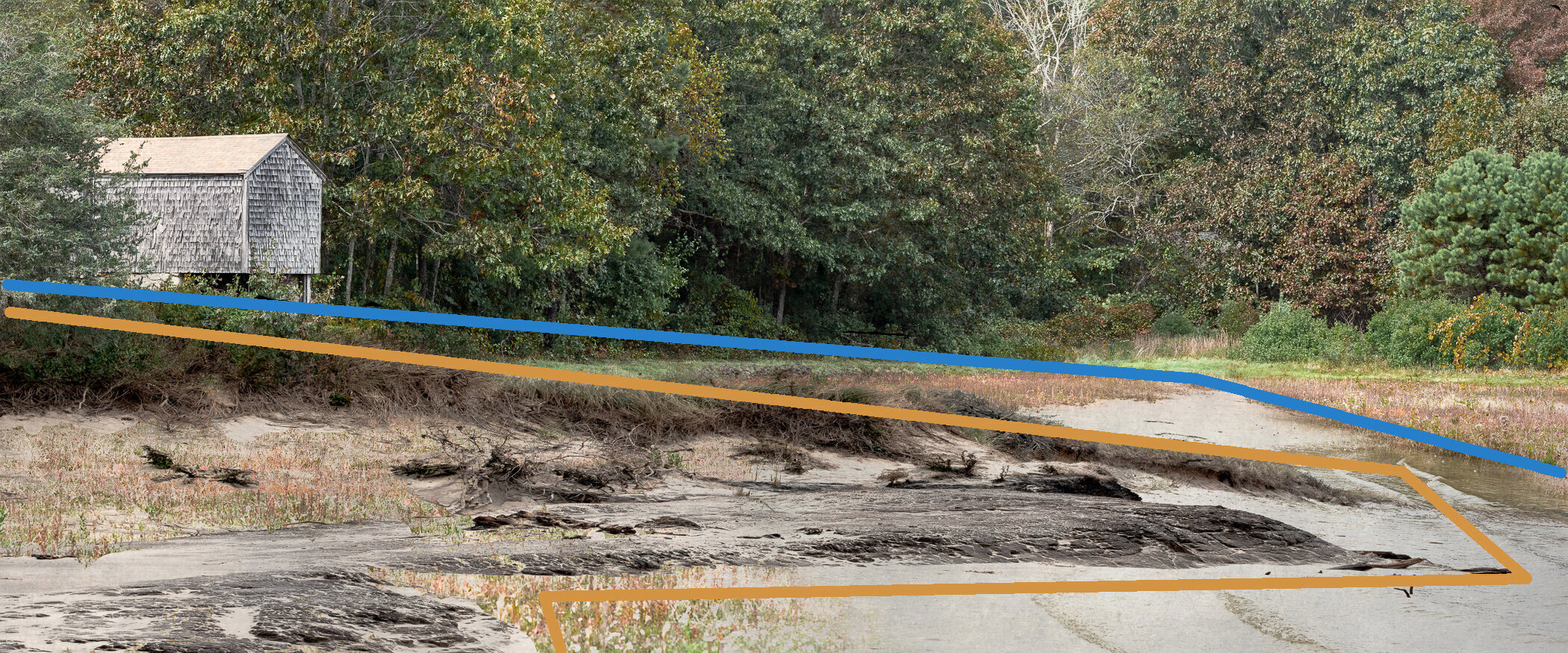Geology and The Physical World: Vicki McKenna
The current exhibition in the main gallery ”Geographies of a Shifting World “ features core artists Vicki McKenna and Kathline Carr. The show is open through October 25th by appointment and during gallery hours Saturday and Sunday from 12–4PM. Below Core Artist Vicki McKenna talks about her work.
Vicki McKenna
It’s a pleasure to be showing my work with Kathline Carr’s for we share an interest in geology and the physical world. With this show we present our individual thoughts on climate change. Trained as a geologist, I see rocks as telling a story if you know how to interpret them. Photographs also require interpretation for they are the ingredients of a story rather than the story itself. The viewer assembles them into a narrative that is personally important.
My works are photo illustrations that combine multiple photographs and are intended to collapse present and future into one image. All my previous work has been straight photography. I’ve captured an image in the camera, edited, and printed it. My use, here, of editing software to create a composite image is a departure that seemed justified by the challenge of incorporating the element of time into the final image.
I was motivated by considering the effects of rising sea level. Each image is a montage of two or more photographs. I have merged one photograph representing the current environment with other photographs representing a possible future. The composite image isn’t meant to be a scientific thesis, but a metaphor for a possible result of climate change. In some images it is easy to identify the elements of the individual photographs. In others, the blending of photographs creates an image that almost seems realistic. The ambiguities of scale and detail in the montage are intended to create a sense of discontinuity or unease.
I’ve frequently been asked why I’ve chosen the specific images that I’ve combined, so let me give you two examples. The final image Cranberry Bog, Brewster, MA is below.


In Illustration 2 I’ve indicated which pieces of the final image are contributed by the original photographs. Above the blue line is the cranberry bog in Brewster, MA., located on the northern side of Cape Cod facing the bay. This environment is creating a layer of soil rich in organic matter. There is little active erosion of the nearby shoreline. Within the orange line is a component from a photograph taken on Martha’s Vineyard. Here active erosion caused by ocean waves has exposed a layer of peat weathering out of the base of a sand dune. I’ve paired these two photographs because the southern side of Cape Cod, facing the open ocean and an area of active erosion, will retreat inland. As storms and rising sea level push dunes landward they first might cover the cranberry bog. Further erosion will degrade the dunes, eventually exposing the peat layer, created by the bog, as in happening on Marth’s Vineyard today.
The first example is based on the association of specific processes. In other images, as in Illustration 3, I’ve paired photographs to present a more poetic image juxtaposing land and ocean; present and future. This is another approach to have the viewer consider the consequences of climate change.
Illustration 3: New Bedford, MA

